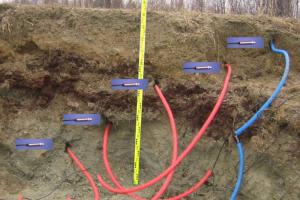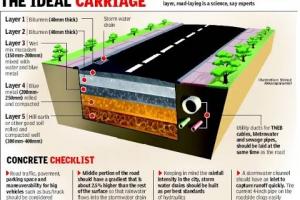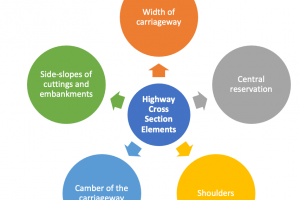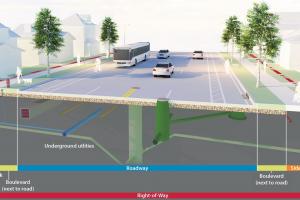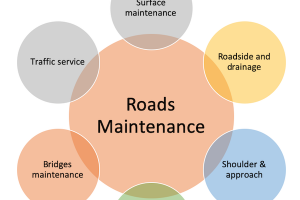Causes of Roadway/Highway Failure
Design of pavement can be done by at east the following methods:
- Computerized optimization programs.
- Mechanical methods based on stress-strain calculation.
- Empirical methods in which performance of pavements is predicted from the results of road tests and actual expensive.
Causes of Roadway Failure
1. Asphaltic concrete:
Pavement considered flexible and the failure mechanism is assumed to be plastic deformation due to the communicative load over the life of pavement.
- Elastic Deformation: Temporary deforms the foundation material and compresses the air that fills the voids of the base and subgrade. In truly elastic deflection, permanent unevenness does not occur, even under repeated application of load.
- Consolidation Deformation: Enough load to expect part of the air and water and thus consolidate the material. Small but permanent deformation. It progress with additional load repetitions until the affected layer become consolidated. Failure may not result if the traffic is well distributed. The pavement settles uniformly as a whole.
- Plastic deformation: Occurs when fluid and the air pressure in the pores of the subgrade, base material or paving combine with forces produced by the load to displace the roadway material. Deformation is progressive under load repetition. Major cause of roadway surfaces failure (material from under wheel paths is displaced to the side by load subject to bending in horizontal plane. A high beam strength in pavement or base will strengthen a roadway against plastic deformation).
2. AC Pavement:
Treated as multi-layered structures in which function of each layer is to spread the load. So as to stay within the bearing capacity of next layer consequently each layer is subjected to careful design.
3. PC Cement Pavement:
Rigid, so the slabs rebounding after the deflection due to load (as a result) the failure mechanism are assumed to be fatigue, caused by a certain number of repetitions of significant load.
PC concrete pavements design focus on the concrete slab itself with base and subbase. Courser considered only to the extent that they provide different levels of support for the slab and hence result is different significant load. Primarily to provide support for construction equipment and to provide a drainage layer.
- Pumping is another cause of failure of PC concrete pavement. Fine material in a saturated base from a slurry with water in the base.
- With wheel load some slurry is forced out through cracks in the surface of the pavement.
- Repeated applications eventually pumps out enough material to undermine the support of the pavement surface leading to more cracking and progressive failure.
Flexural Pavement:
Lightly Traveled Roadway:
- design by precedent standard thickness specified for each of the pavement layers, according to the type of roadway involved (local streets etc).
- very lightly traveled roads use the thinnest layers of the various materials that is practical to construct.
- Other design methods: Providing a layer thicker which will spread wheel loads enough to keep them within the bearing capacity of the next lowest layer.
Elements of Thickness Design:
- Traffic loading
- climate or environment
- material characteristics
- cost of construction and maintenance and design period.




